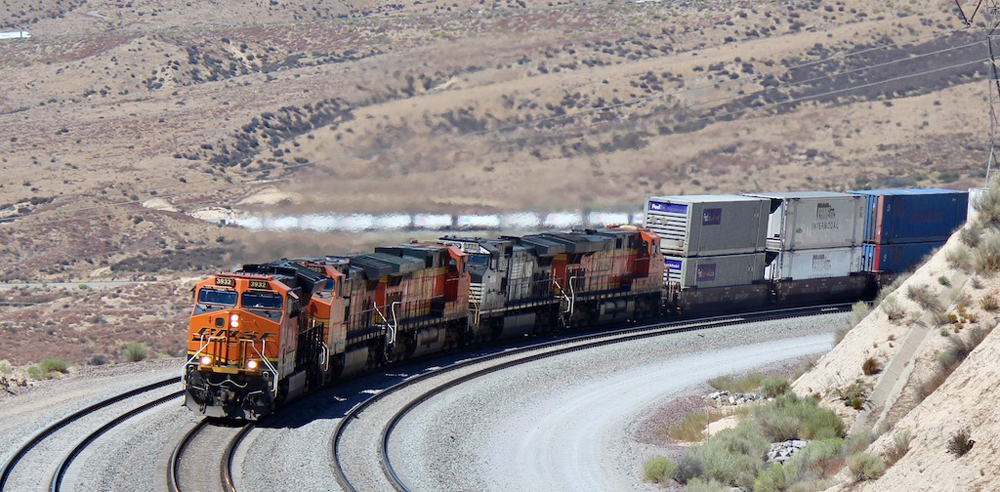
WASHINGTON — The U.S. Environmental Protection Agency will hold a public hearing next week on proposed California regulations that would require the use of zero-emissions locomotives in the state beginning in 2030.
The California Air Resources Board approved the so-called in-use locomotive regulation last year. The EPA must review California regulations that exceed federal regulations; the agency can approve or reject the CARB proposal.
The CARB regulation would ban any locomotive that is 23 years or older from operating in California. The regulation sets dates after which all locomotives with engines built after certain years must operate in a “zero-emission configuration.” Railroads operating in California would have to begin contributing to a spending account where money would be set aside for the acquisition of zero-emission locomotives.
The Association of American Railroads opposes the regulation and has challenged it in federal court. The CARB regulation would mandate investments in locomotives that aren’t yet commercially viable while limiting the lifespans of more than 25,000 diesel-electric locomotives currently in use, the AAR says. The trade group also argues that the CARB regulation violates the Clean Air Act, would put some short line railroads out of business, and hurt the supply chain in California and beyond.
BNSF Railway says the CARB regulation threatens the viability of its proposed $1.5 billion Barstow International Gateway intermodal terminal. BNSF last week urged BIG project supporters to file comments with federal regulators.
“The California Air Resources Board has proposed well-intentioned but ill-conceived regulations that must be opposed to allow for workable clean technology to emerge,” BNSF said in an email to project supporters.
“The proposed ‘In-Use Locomotive Regulation’ would require zero-emission (such as electric) locomotives in California, which do not yet exist,” BNSF said. “Even worse, projects like the Barstow International Gateway would be canceled, unable to adhere to the new, costly, and misguided regulations.”
The EPA hearing will begin at 10 a.m. Eastern on March 20. Information on how to watch or participate in the virtual hearing is available online.
The agency is accepting written comments through April 22. Instructions for submitting comments are available online.














I think the railroads will win this one. Expect it to go to the Supreme Court.
As idiotic as this proposal is, I need to point out that as of 2022, 54% of California’s electricity came from non-carbon sources. That figure includes about 9% nuclear from Diablo Canyon, and geothermal and some other minor sources.
Politicians and their Representatives clearly aren’t educated on the facts and are STUPID.
Still remember a statement made by Obama’s press secretary a few months after taking office in response to a automobile engineer’s comment. It was made after legislation on a Proposed legislation for auto’s to get an average of 60 mile to the gallon. Engineer said that to get that kind of mileage, cars need to get smaller and lighter. That’s the LAWS OF PHYSICS.
Press Secretary responded; “WE WILL GET THOSE LAWS CHANGED”.
Still scratching my head on that one.
Imagine a state without railroads. Imagine California. They must really love those trucks!
I have a suggestion for CARB, if you want zero-emission locomotives, then pay to put all trackage in California under wire and there you go! The money would have to come out of the CARB budget though.
I have to ask: how do you think all of that electricity will be generated? California does not have enough wind or solar to have any impact on power generation NOW – let alone if all that catenary is installed here in the state.
Right now, the vast majority of California’s electricity is generated by gas or coal fired power plants. There is but one viable nuclear plant left in the state, and its generating capacity is used in Northern California.
More crippling regulations by know-nothing political idiots posing for the TV cameras. Here we go with another PTC-style financial disaster.
No — far worse than PTC — actually devastating.